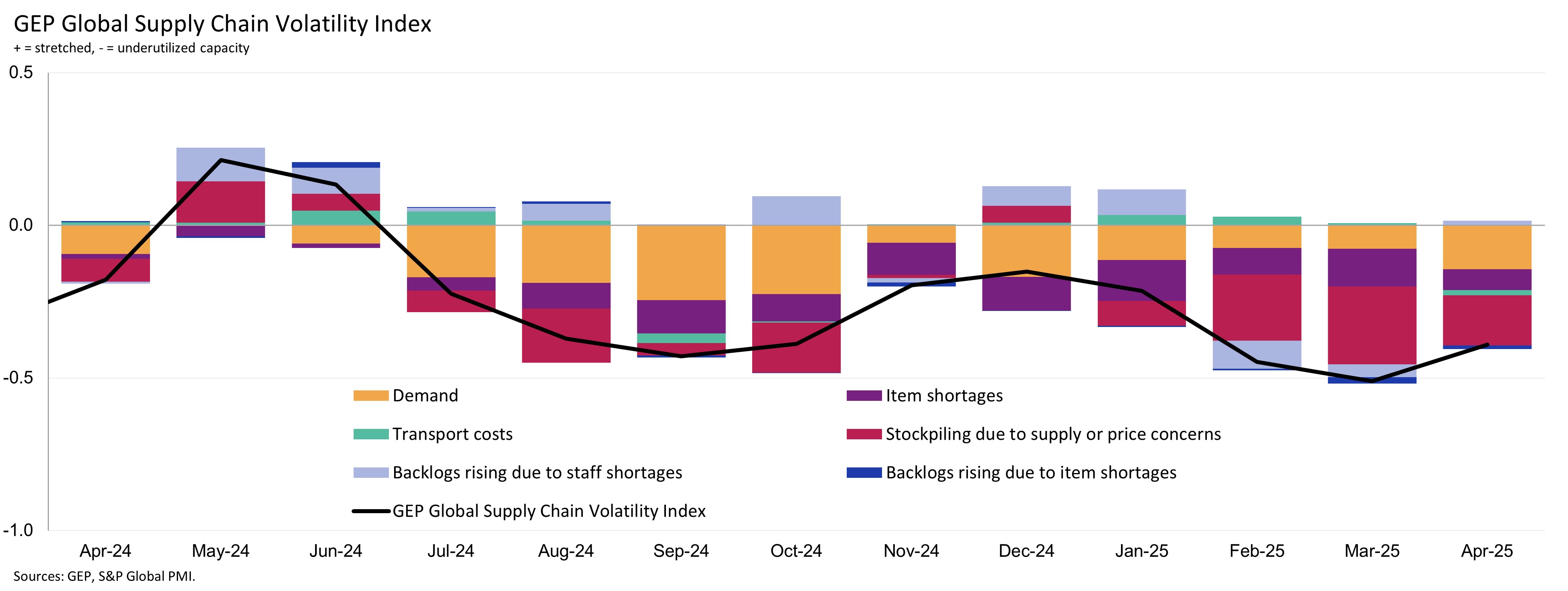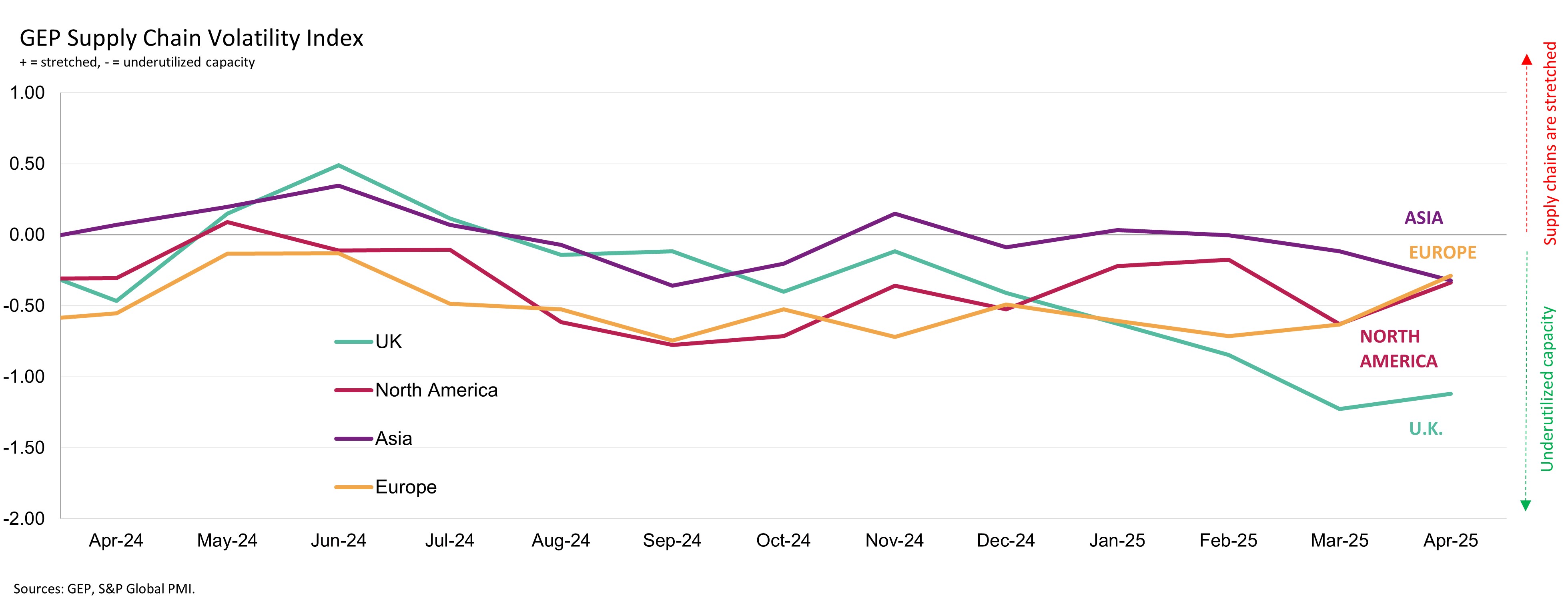Global Supply Chain Volatility Index
May 2025
Global: -0.39
Asia: -0.32 -0.20
EU: -0.29 +0.34
NA: -0.33 +0.29
UK: -1.12 +0.12
Tariffs Bite: North American and Asian Manufacturers Retrench in April, With Global Material Purchases Down at Accelerated Pace: GEP Global Supply Chain Volatility Index
- The steep fall in global manufacturers’ purchases signals a likely production slowdown in the near future
- North America factories respond to tariffs by buying less inputs and aggressively stockpiling
- Purchasing activity by Asian manufacturers at its weakest since Dec. 2023 as demand slumps across the region’s key exporting hubs
- Bright spot: Europe’s industrial recession is finally coming to an end as spare capacity shrinks further. more..
GEP Global Supply Chain Volatility Index
-0.39
May 2025
Asia: -0.32
EU: -0.29
NA: -0.33
UK: -1.12
Interpreting the data:
When the SCVI > 0, supply chain capacity is being stretched. The further above 0, the more stretched supply chains are.
When the SCVI < 0, supply chain capacity is being underutilized. The further below 0, the more underutilized supply chains are.

ASIA: Factory Slowdown Deepens in China, Taiwan and South Korea
EUROPE: Industrial Slump Shows Signs of Easing, Led by France & Germany
U.K.: Manufacturing Slump Nears 20-Year Low
NORTH AMERICA: Manufacturers Raise Safety Stock To Blunt Tariffs
The next release of the GEP Global Supply Chain Volatility Index will be 8 a.m. ET, June 11, 2025.
About the GEP Supply Chain Volatility Index
The GEP Global Supply Chain Volatility Index is produced by S&P Global and GEP. The GEP Global Supply Chain Volatility Index is derived from S&P Global’s PMI™ surveys, sent to companies in over 40 countries, totalling around 27,000 companies. These countries account for 89% of global gross domestic product (GDP) (source: World Bank World Development Indicators).
The headline figure is the GEP Global Supply Chain Volatility Index. This a weighted sum of six sub-indices derived from PMI data, PMI Comments Trackers and PMI Commodity Price & Supply Indicators complied by S&P Global.
The GEP Global Supply Chain Volatility Index is calculated using a weighted sum of the z-scores of the six indices. Weights are determined by analysing the impact each component has on suppliers’ delivery times through regression analysis.
The six variables used are 1) JP Morgan Global Quantity of Purchases Index, 2) All Items Supply Shortages Indicator, 3) Transport Price Pressure Indicator and Manufacturing PMI Comments Tracker data for 4) stockpiling due to supply or price concerns, and backlogs rising due to 5) staff shortages and 6) item shortages.
A value above 0 indicates that supply chain capacity is being stretched and supply-chain volatility is increasing. The further above 0, the greater the extent to which capacity is being stretched.
A value below 0 indicates that supply chain capacity is being underutilized, reducing supply-chain volatility. The further below 0, the greater the extent to which capacity is being underutilized.
A Supply Chain Volatility Index is also published at a regional level for Europe, Asia, North America and the UK. The regional indices measure the performance of supply-chains connected to those parts of the world.
For more information on PMI surveys, PMI Comments Trackers and PMI Commodity Price & Supply Indicators, the GEP Supply Chain Volatility Index methodologies, please contact economics@ihsmarkit.com.


